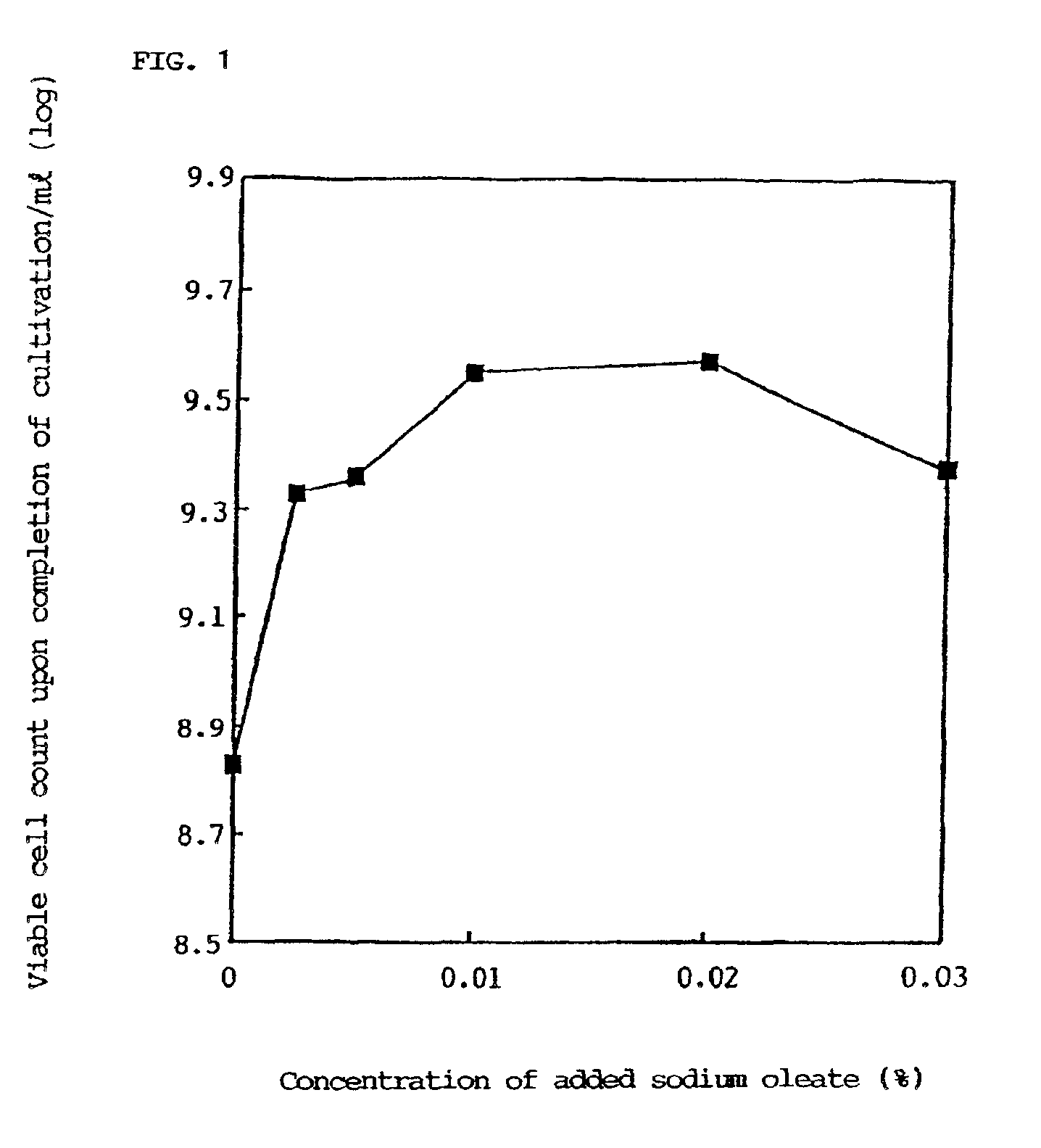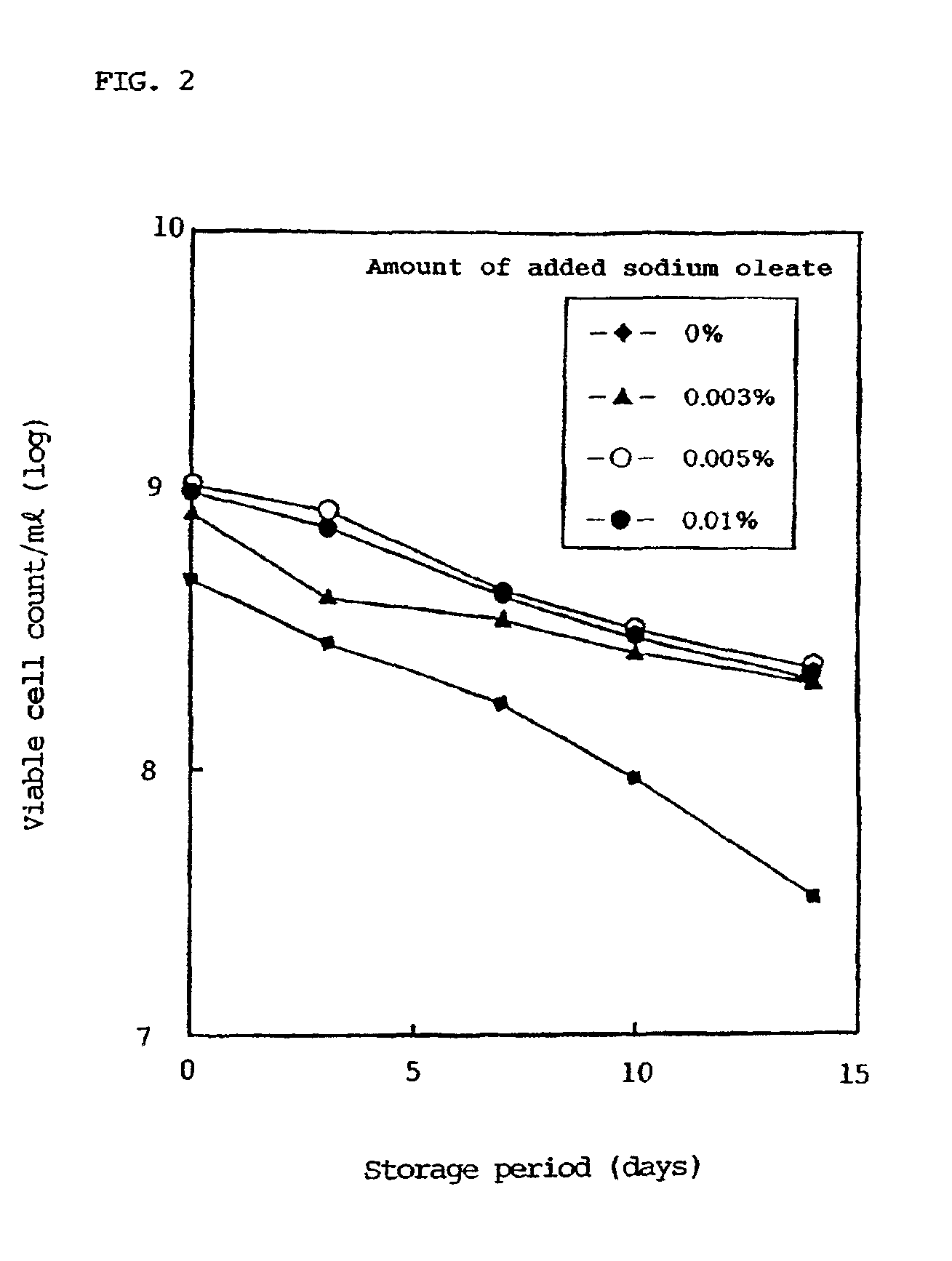Fermented milk drinks and foods and process for producing the same
a technology of fermented milk and food, which is applied in the field of fermented milk, can solve the problems of reduced viable cell count difficult selection of bacterial strains, and many strains of strains of strains of strains of strains of strains of animal milk, and achieve the effect of improving the viability of lactic acid bacteria
- Summary
- Abstract
- Description
- Claims
- Application Information
AI Technical Summary
Benefits of technology
Problems solved by technology
Method used
Image
Examples
example 1
[0040]Preparation of extracts (1)
[0041]Green tea, oolong tea, washed and crushed ginger and washed and crushed green onion were separately extracted for 60 minutes in aliquots (10 times the weights of the respective materials) of hot water of 90° C., whereby respective extracts were prepared. They were separately concentrated in an evaporator, and extracts of [10% soluble solids (Brix 10°)] were obtained.
example 2
[0042]Comparison of proliferation degrees of lactic acid bacteria (1)
[0043]Using aliquots of a 20% skim milk powder solution as a basal medium, the ginger extract, green tea extract, oolong tea extract and green onion extract, which were obtained in Example 1, were added at 0.1% as lactic acid bacteria growth factors, respectively, and proliferation degrees of lactic acid bacteria were studied. Described specifically, the sterilized media were inoculated with 1% of a starter of Lactobacillus casei YIT9029, followed by cultivation at 37° C. for 48 hours. After the cultivation, the proliferation degrees of the lactic acid bacteria were compared by using as indices the acidities of the resulting cultures (titers determined by sampling 10-mL portions of the cultures and then titrating organic acids in the samples with 0.1 N caustic soda while using phenolphthalein as an indicator). The results are shown in Table 1. For the sake of comparison, “MEAST” (trademark for beer yeast autolysate...
example 3
[0046]Comparison of the proliferation degree of the lactic acid bacteria among the acidities of extracting solutions
[0047]Using hot water (90%) and citric acid solutions (90° C.) of pH 3.0, 4.0 and 5.0, oolong tea extracts were prepared under the same conditions as in Example 1. They were separately concentrated in an evaporator, whereby extracts of [10% soluble solids (Brix 10°)] were obtained.
[0048]The individual extracts so obtained were added to aliquots of a 20% skim milk powder medium such that their concentrations became 0.1%. The resulting media were inoculated with Lactobacillus casei YIT9029, followed by cultivation at 37° C. for 48 hours. The acidities of the thus-obtained cultures were measured in the same manner as in Example 1. The results are shown in Table 2.
[0049]
TABLE 2Extracting solventAcidityHot water13.7Citric acid solution (pH 3.0)17.2Citric acid solution (pH 4.0)17.1Citric acid solution (pH 5.0)15.5
[0050]As is shown in Table 2, the extracts obtained by conduct...
PUM
| Property | Measurement | Unit |
|---|---|---|
| pH | aaaaa | aaaaa |
| temperature | aaaaa | aaaaa |
| pH | aaaaa | aaaaa |
Abstract
Description
Claims
Application Information
 Login to View More
Login to View More - R&D
- Intellectual Property
- Life Sciences
- Materials
- Tech Scout
- Unparalleled Data Quality
- Higher Quality Content
- 60% Fewer Hallucinations
Browse by: Latest US Patents, China's latest patents, Technical Efficacy Thesaurus, Application Domain, Technology Topic, Popular Technical Reports.
© 2025 PatSnap. All rights reserved.Legal|Privacy policy|Modern Slavery Act Transparency Statement|Sitemap|About US| Contact US: help@patsnap.com


